Best electric guitars 2025: our top picks for every playing style, ability and budget
Useful buying advice and our expert pick of the best electric guitars for newcomers to pro players

Okay, so is there really such a thing as the best electric guitar? Well, a quick scour of the internet will show you that everyone and their dog has an opinion on the matter, and you know what they say about opinions... I like to think that here at Guitar World, though, our opinion carries more weight than most, as our team has collectively reviewed literally thousands of guitars, with over 30 years of testing, gigging, recording, and endless practicing experience.
The truth? I believe there is no best electric guitar, only the best guitar for your specific needs. So, to help assist a range of guitar players in finding their perfect match, I’ve set out this all-encompassing guide to cover all the bases and then some. You'll find guitars spanning the gamut from beginner to seasoned pro here, and plenty in between that should get you your perfect match.
I’m Daryl, and I’m here to help you find the ultimate electric guitar. With over ten years of experience as a music retail manager, I've helped countless players find their perfect instrument. Now, I share my insights and reviews as a full-time writer for Guitar World.
Currently, my top pick is the stunning Fender Vintera II Stratocaster. If you’ve ever wanted to get your hands on one of the most iconic electric guitars of all time, but you need something that feels fresh and modern, with plenty of retro mojo, then this is definitely a guitar to consider. For those on a budget, I’d highly recommend the Sterling By Music Man Intro Series Cutlass. If ever there was a guitar that proves you don’t need to spend a fortune to get a seriously good instrument, it would be this affordable Cutlass.
In this guide, you'll find our top picks below, but if you need more help, you can check out our FAQs section for more knowledge or examine each model side-by-side with our spec comparison table. Each entry features an expert verdict from a member of our reviews team as well as a link to the full review so you can dive deeper into your favorites.
Our top picks

Many see the Stratocaster as the ultimate guitar, and well, we're no different. Versatile, accessible, and incredibly playable, there's an argument to be made that the Strat is one of the best electric guitars of all time, and the Fender Vintera '60s Stratocaster is a prime example of that.
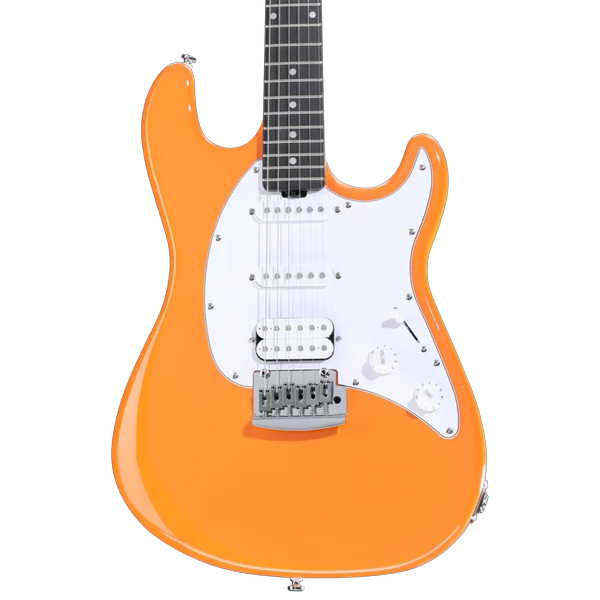
A fun guitar to play, well built, versatile, and a great option for beginners – and for budding modders too – the Intro Series Cutlass doesn’t call attention to itself until you pick it up and plug it in. Then it all makes perfect sense.

There's no argument to be had with the build, sound, or playability of this entry-level offset, and with its shorter scale, it might just be the ideal beginner guitar for young players.
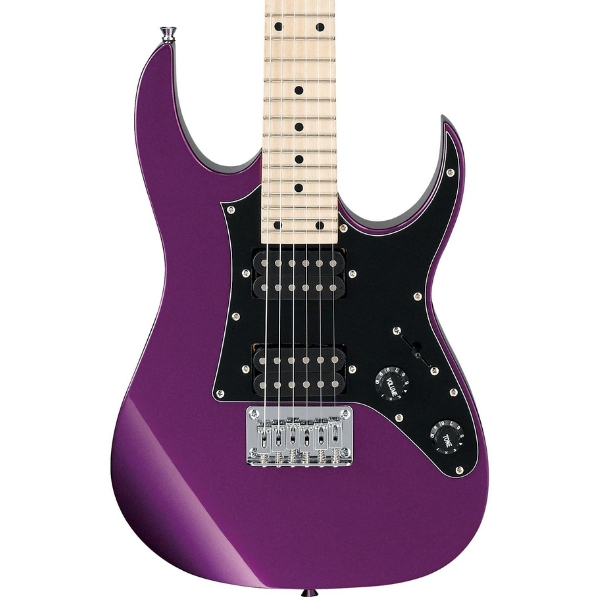
When selecting a smaller guitar for children, the pint-sized Ibanez miKro GRGM21 was the only choice for me. The Ibanez miKro GRGM21 boasts impressive construction quality for a compact guitar.
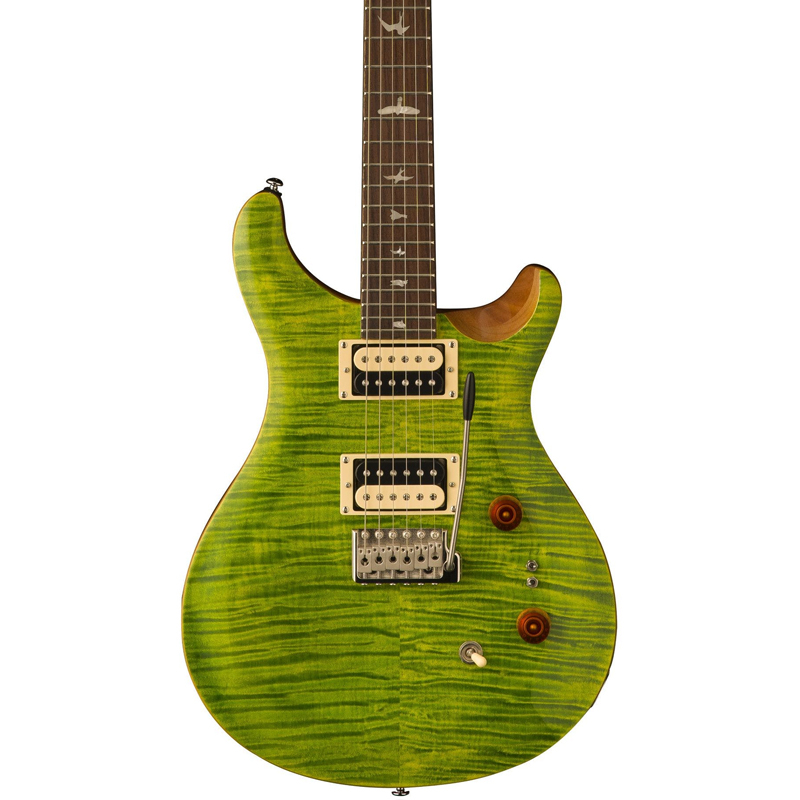
To many, the Custom 24 presents the pinnacle of PRS design, and the thing about great guitar design is that it translates well at different price points. The SE Custom 24 is stunning in anyone’s book - and is our pick for the best electric guitar for intermediate players.

Okay, so the Epiphone Les Paul Special is not just visually stunning with its classic Gibson TV Yellow finish; it’s also built surprisingly well considering its wallet-friendly price tag.
Best overall

Specifications
Reasons to buy
Reasons to avoid
✅ Buy if you want a reliable gigging guitar: With a neck that begs to be played, a versatile set of single-coil pickups, and Fender's famous build quality, this is a reliable gigging companion for sure.
❌ Avoid if you want a guitar for heavier tones: While this guitar is tonally versatile, it can't quite handle heavier tones.
Build: ★★★★½
Playability: ★★★★½
Sound: ★★★★½
Many see the Stratocaster as the ultimate guitar, and well, we're no different. Versatile, accessible, and incredibly playable, there's an argument to be made that the Strat is one of the best electric guitars of all time, and the Fender Vintera '60s Stratocaster is a prime example of that.
Build: Featuring the standard formula of an alder body and a maple neck with rosewood fingerboard, this Strat is incredibly well-made. So much so that I had a hard time believing it was not US-made. The finishing is on point, the neck pocket was neat and tidy, and there was not a thing out of place.
Playability: Personally, I love '60s Fender guitars. The neck profiles just seem to fit my hand the best, and the Vintera II 60s Stratocaster is no different. The supremely comfortable early-'60s C neck profile just begs to be played and I really like how the Vintera series morphs each era’s most desirable facets into a single, wholesome model that’s instantly identifiable as such.
Sound: A trio of vintage-voiced pickups that will transport you back to the golden age of guitar making. It's a guitar that perfectly evokes the style and sound of an original sixties example without breaking the bank, delivering those classic Strat tones without you having to remortgage or take out a loan to get one.

"Plugging in the Strat it’s an instantly familiar and pleasing set of tones we encounter. While all the sounds are bright and sparkly, there’s no hint of the brittle rasp that afflicts some Strats. Through the clean channel with a wash of reverb, every tone is crystal clear and smooth."
Read more: Fender Vintera II 60s Stratocaster review
Best on a budget
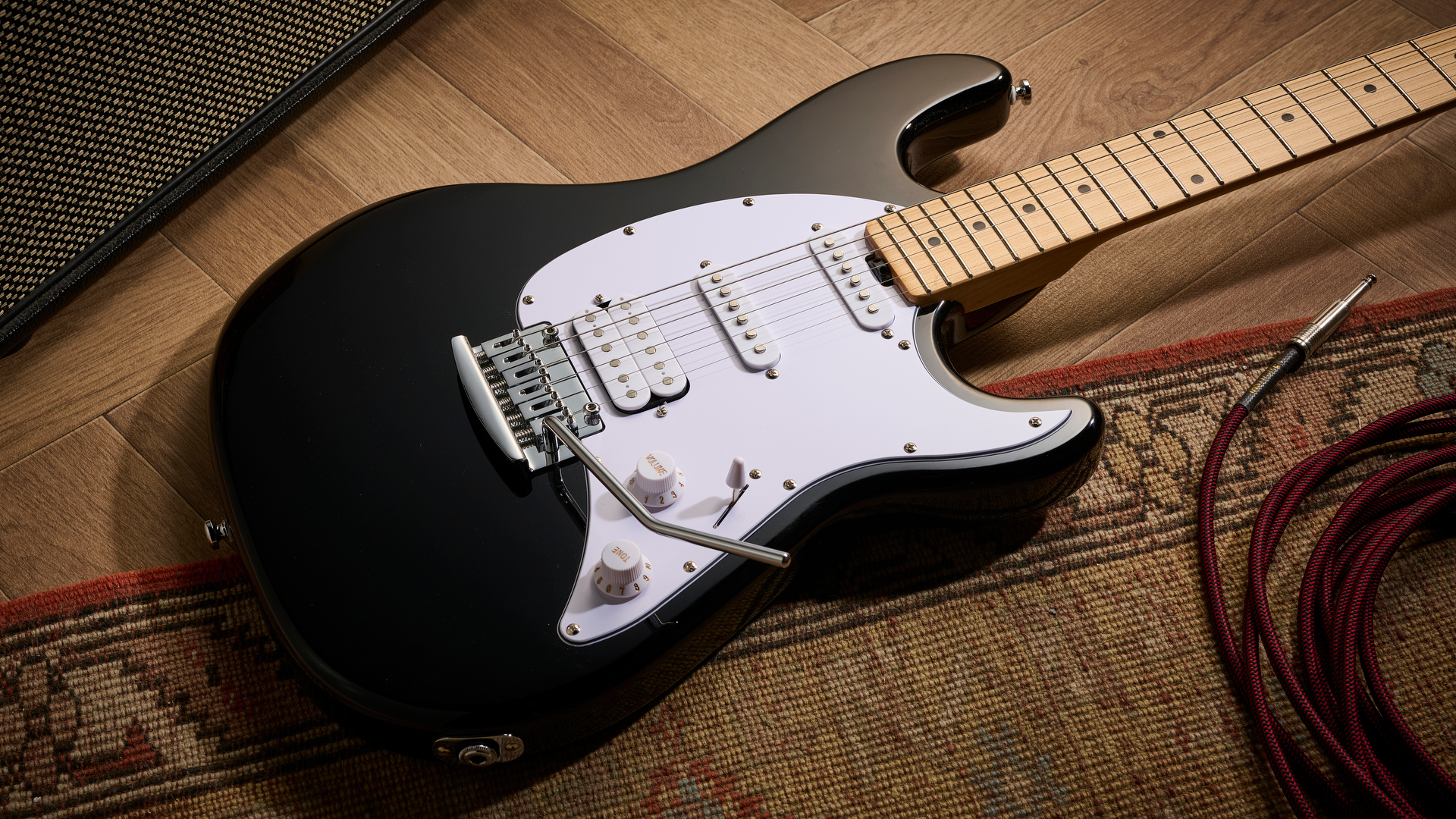
Specifications
Reasons to buy
Reasons to avoid
✅ Buy if you want an affordable guitar that’s reliable: If ever there was a guitar that proves you don’t need to spend a fortune to get a seriously good instrument, it would be this affordable Cutlass.
❌ Avoid if you’re not looking for a basic guitar: With this being an affordable instrument, it doesn’t have a lot of features.
Build: ★★★★☆
Playability: ★★★★☆
Sound: ★★★★ ☆
Build: The Sterling By Music Man Cutlass from the Intro Series is a well-crafted entry-level electric guitar that defies its beginner designation. It features a solid poplar body and a bolt-on hard maple neck shaped into a comfortable C-profile. Now, while it lacks some premium touches found on its higher-end cousins, the satin-smooth finish and thoughtful design elements like the five-bolt joint for added stability set it apart from other models in this price bracket.
Playability: This Cutlass is clearly designed with a beginner in mind, offering a solid setup right out of the box. I feel like the fingerboard’s 12” radius will provide comfort for the majority of newbie and experienced players alike, with a smooth finish that never gets in the way of what you are trying to play.
Sound: Equipped with a versatile HSS pickup configuration, the Cutlass delivers a range of tones that cater to various musical styles. The combination of a ceramic bridge humbucker and two ceramic single-coils, controlled by a five-way selector, allows for a rich sonic palette. Whether strumming chords or diving into intricate solos, the guitar maintains a clear and resonant tone that's streets ahead of the competition in this price category.

" A fun guitar to play, well built, versatile, and a great option for beginners – and for budding modders too – the Intro Series Cutlass doesn’t call attention to itself until you pick it up and plug it in. Then it all makes perfect sense."
Read my full Sterling By Music Man Intro Series Cutlass review
Best beginner
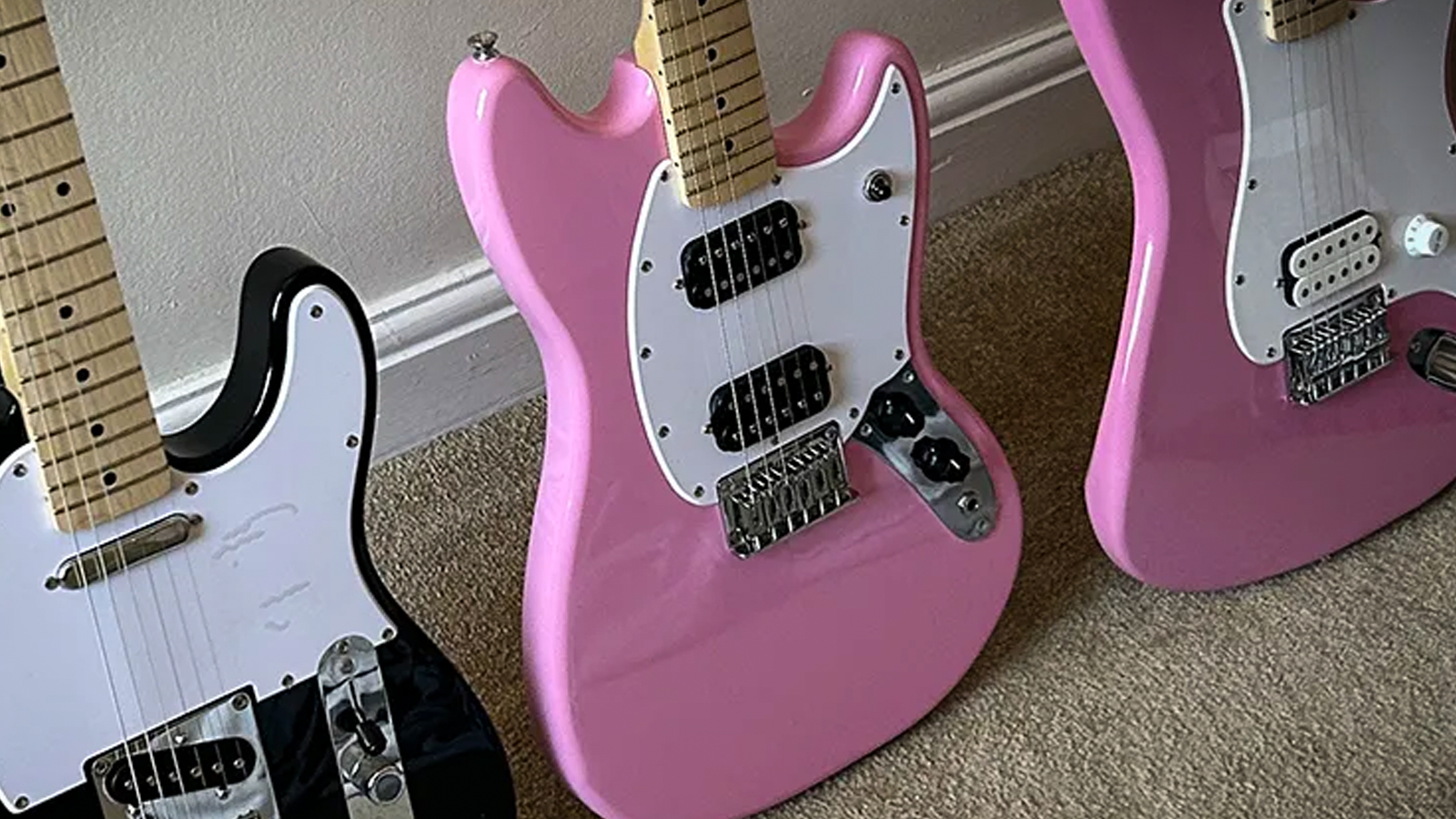
Specifications
Reasons to buy
Reasons to avoid
✅ Buy if you’re a complete beginner: Featuring a 24” scale length, a C-shape satin urethane maple neck, and a 9.5” radius maple fingerboard, this guitar is designed to make taking your first steps on the instrument as easy as possible.
❌ Avoid if you’re an intermediate player: This guitar is designed with beginners in mind. If you’re more advanced, you’ll want to seek out a different model.
Build: ★★★★☆
Playability: ★★★★☆
Sound: ★★★★ ☆
Build: For me, I think the Squier Bullet Mustang is a fantastic beginner instrument. This affordable Mustang features a compact, offset design with a 24” scale length, a C-shape satin urethane maple neck, and a 9.5” radius maple fingerboard. While the build quality is solid, it's worth noting that the setup may not be as refined as on more advanced models.
Playability: This guitar promises an enjoyable playing experience for smaller players, particularly thanks to its shorter dimensions, which younger guitarists will find fun and easy to navigate. Yeah, okay, the setup could benefit from a professional adjustment, but overall, the guitar feels comfortable.
Sound: Equipped with dual ceramic Squier humbuckers, the Sonic Mustang shines when introduced to some grit and distortion. In our review, we noted that "when dialed back to clean, the neck pickup offers up some pleasing warm depth," but we preferred the tone overall when there was a decent amount of gain involved.

"There's no argument to be had with the build, sound, or playability of this entry-level offset, and with its shorter scale, it might just be the ideal beginner guitar for young players."
Read my full Squier Sonic Mustang review
Best for kids

Specifications
Reasons to buy
Reasons to avoid
✅ Buy for a child or small player: This guitar is designed with kids in mind and therefore won’t be suited to adult players.
❌ Avoid for larger kids: Larger children, from 10 upwards, will need a full-sized guitar and are best avoiding this model.
Build: ★★★★☆
Playability: ★★★★ ½
Sound: ★★★★ ☆
When selecting a smaller guitar for children, the pint-sized Ibanez miKro GRGM21 was the only choice for me.
Build: The Ibanez miKro GRGM21 boasts impressive construction quality for a compact guitar. Its smaller body and robust hardware provide a solid and well-crafted feel. The 22.2” scale length ensures a comfortable playing experience, while the slim neck design accommodates players of various sizes, making it perfect for kids who are just beginning or seasoned players looking for a travel-friendly companion.
Playability: Personally, I found this short-scale electric guitar to be especially easy to handle, thanks to its low string tension and thoughtfully designed contours. The 24 frets offer plenty of range, although some might feel a bit cramped in the higher frets. It is ideally suited for young beginners while also being an enjoyable, portable option for adults. However, I did notice some tuning stability issues, needing frequent adjustments, particularly after bending strings.
Sound: In terms of sound, the Ibanez miKro shines with overdriven and distorted tones, making it suitable for rock, blues, and punk genres. The bridge pickup produces powerful solos, while the neck pickup delivers a warm, bluesy sound. While the clean tones are not outstanding, some adjustments on the amp can enhance them. Overall, it’s an excellent economic option for anyone beginning their journey with the electric guitar.

"The Ibanez miKro GRGM21 is a great little guitar, suitable for both kids wanting to start out and experienced adults who just want a fun, portable electric guitar."
Read my full Ibanez GRGM21M-BLT review
Best intermediate
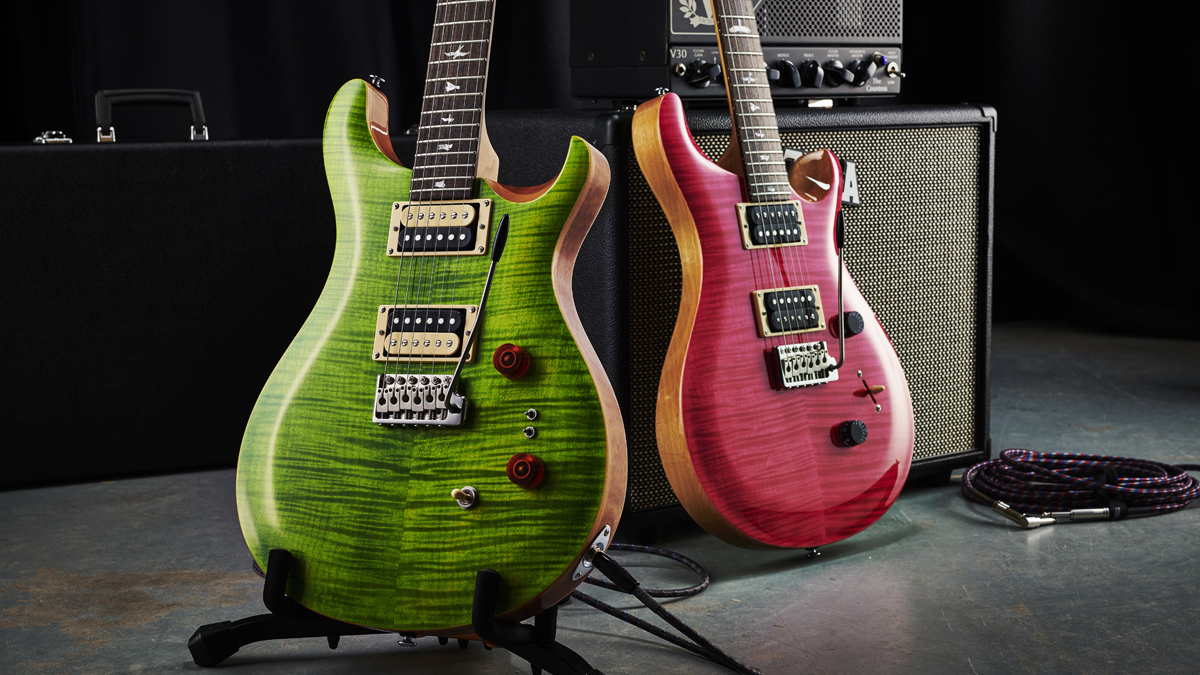
Specifications
Reasons to buy
Reasons to avoid
✅ Buy if you want a fast neck: The maple neck utilises the famous PRS Wide Thin profile, and 10” fretboard radius, and feels incredibly quick to navigate.
❌ Avoid if you like understated guitars: This PRS isn’t the most subtle model ever, and can look a little over the top to those who like classic designs.
Build: ★★★★★
Playability: ★★★★ ½
Sound: ★★★★★
Build: To many, the Custom 24 presents the pinnacle of PRS design, and the thing about great guitar design is that it translates well at different price points. The SE Custom 24 is stunning in anyone’s book - and is our pick for the best electric guitar for intermediate players. The gorgeous double-cutaway body is constructed from a solid mahogany core, while the stunning flame maple veneer adds a touch of elegance without being overly flashy.
Playability: One of the standout features of the Custom 24 is its Wide Thin neck profile. This design strikes an impressive balance between comfort and speed, making it suitable for both beginners and seasoned players. The smooth neck surface facilitates effortless transitions between chords and single notes, while the 24 frets provide ample range for piercingly high soloing. The guitar's body contours also ensure that it sits well when played standing or seated, allowing for long jam sessions without a shred of discomfort.
Sound: The versatility of the PRS SE Custom 24 truly shines through in its tone. Equipped with a bridge humbucker designed for everything from southern rock snarls to heavy metal chunk, and a neck humbucker that excels in blues, rock, and intricate comping, this guitar is a sonic powerhouse. The coil-tapping feature further expands the tonal palette, allowing players to easily switch between a full humbucker sound and bright single-coil tones, perfect for country, funk, or any genre in between.

"Great design, perfectly executed with immaculate builds, the PRS SE Custom 24 is a testament to the good health of the SE project, offering a serious guitar for the money."
Read my full PRS SE Custom 24 review
Best under $500
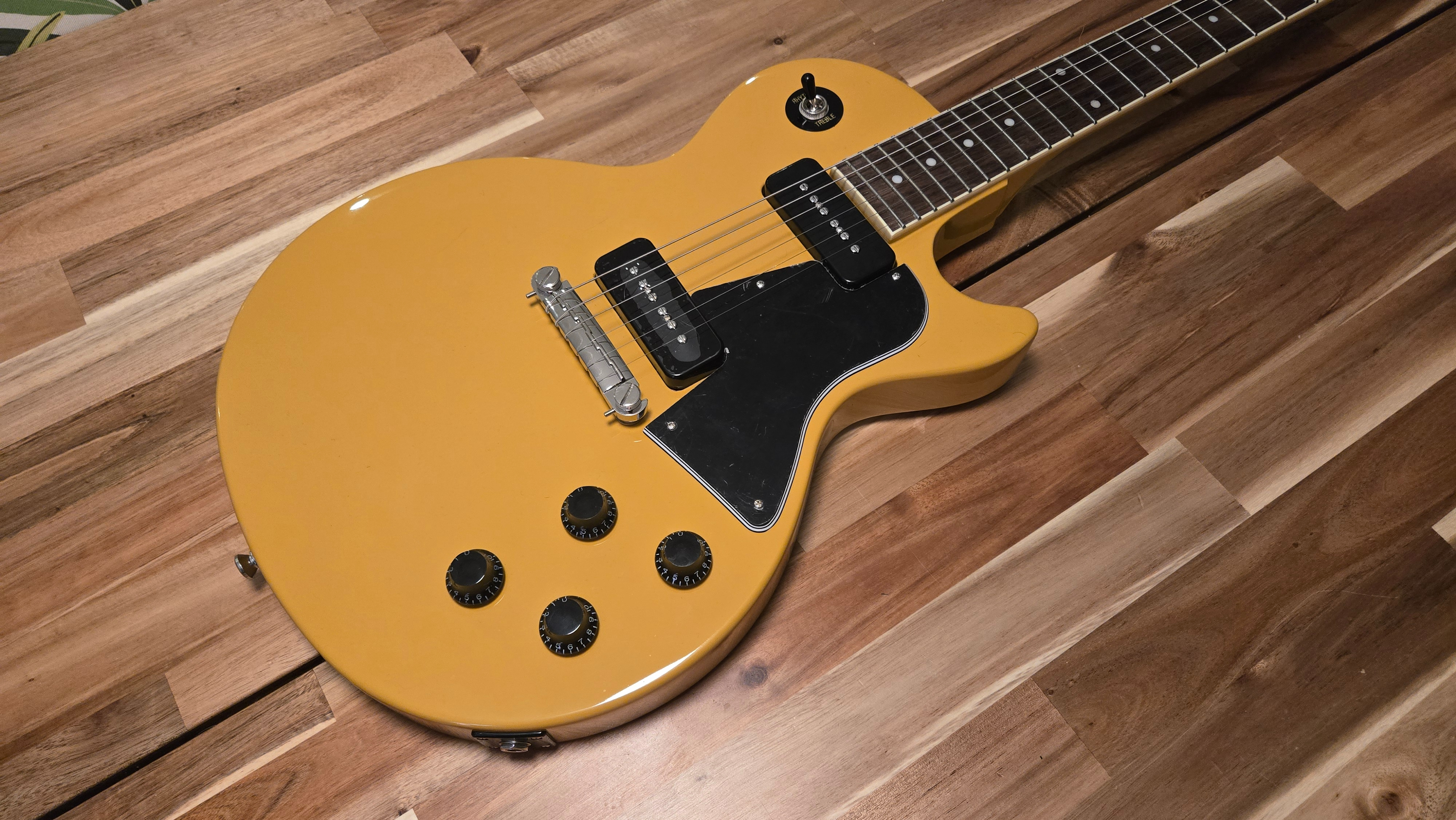
Specifications
Reasons to buy
Reasons to avoid
✅ Buy if you love the sound of a P-90: This is the ultimate punk rock machine, with it’s P-90 pickups providing a razor-sharp tone to die for.
❌ Avoid if you prefer humbuckers: If the noisy tone of these single-coils isn’t for you, then maybe a humbucker-loaded LP will be more up your street.
Build: ★★★★☆
Playability: ★★★★☆
Sound: ★★★★☆
Build: Okay, so the Epiphone Les Paul Special is not just visually stunning with its classic Gibson TV Yellow finish; it’s also built surprisingly well considering its wallet-friendly price tag. Now, the Special is as simple as it comes. Crafted from a slab of solid mahogany, there is no flashy flame top or quilted veneer, just a no-nonsense single cut that means business.
Playability: When it comes to playability, the Epiphone Les Paul Special excels in every regard. The combination of the fat ’50s neck profile and the rosewood fingerboard allows for a comfortable playing experience, whether you're strumming chords or executing intricate leads - although if you have small hands, I'd highly recommend choosing a different axe.
In my tests, I found the guitar to be well-balanced, making it easy to hold for extended periods, and the action is set at a perfect height right out of the box.
Sound: Equipped with two P-90 pickups, the Epiphone Les Paul Special delivers that signature gritty growl and shimmering highs that fans of this pickup style have come to love. The P-90s produce a powerful, punchy sound, offering a blend of crisp highs and bold mids that make it perfect for a variety of genres, from blues and rock to punk and jazz. Whether you’re playing clean or cranked through a screamingly loud tube amp, the tonal versatility of the P-90 is sure to make you fall in love with this gorgeously simple guitar.

"The 2024 Epiphone Les Paul Special is a dream to play. It sounds great, looks a million dollars in TV Yellow, and gives you a different sonic edge to a regular Standard. Don’t write these off as budget guitars - there’s plenty of character here and lots to love."
Read my full Epiphone Les Paul Special TV Yellow review
Best for versatility

Specifications
Reasons to buy
Reasons to avoid
✅ Buy if you want a studio companion: This guitar is crazy versatile and the ideal model to have in the studio to cover various genres and styles.
❌ Avoid if you like Les Pauls: The bulky and heavy nature of a Les Paul isn’t for everyone.
Build: ★★★★½
Playability: ★★★★½
Sound: ★★★★½
Build: Upon first handling the Studio Session, I was impressed by its clean, well-applied Honey Burst finish. The AA flame top is stunning, adorned with a lovely wood grain that truly comes alive under light. There was a minor imperfection near the toggle switch on my review model, but it didn’t detract significantly from the overall beauty. The slim taper mahogany neck features expertly applied binding, a rich ebony fretboard with traditional trapezoid inlays, and is complemented by robust Grover Rotomatic tuners.
Playability: As good as this model looks, the playability of the Studio Session is where I really started to fall for this LP. The neck feels slimmer and narrower than other models, allowing for quick movements, which is perfect for fast legato playing. Gibson's Modern Contoured Heel design enhances upper fret access, making it easier than ever to reach those high notes. While I normally appreciate the heft of a traditional Les Paul, this modern design offers a nice alternative for those who might find the standard neck join cumbersome.
Sound: Tonally, the Studio Session lives up to its name, sporting a pair of '57 Classic pickups that deliver a massive range of rich, golden-era tones ideal for hard rock and blues, but enough output to handle the modern stuff, too. With push/pull coil taps and even a bypass switch, I found its versatility impressive, living up to the expectations of a true studio guitar.
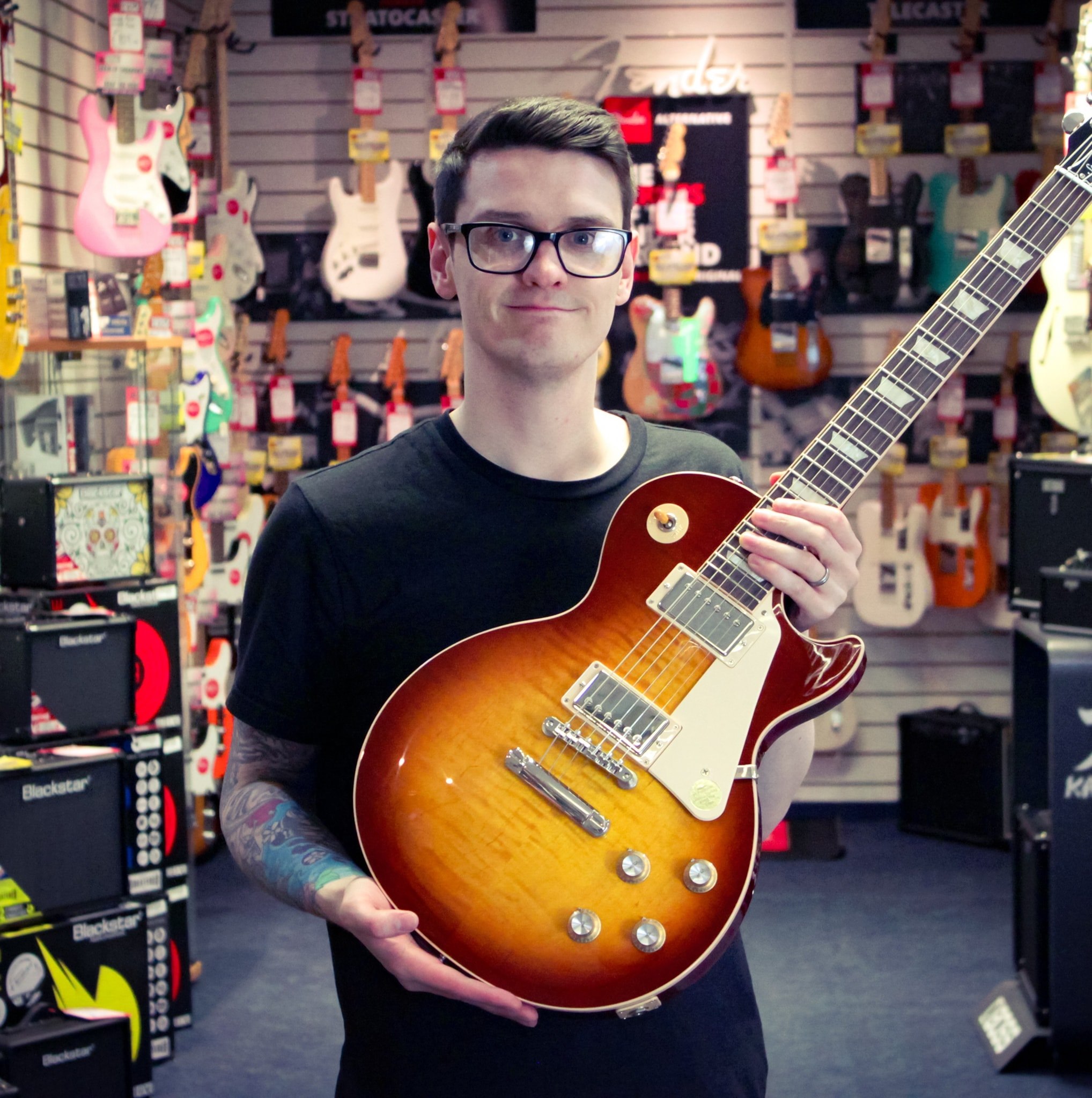
"The Studio Session is a gorgeous guitar, both sonically and aesthetically. The 57 Classic pickups deliver the famous Les Paul snarl in abundance, while the AA-flame top is good enough to make a Standard jealous. Throw in superb playability and more than a few modern appointments, and you get the best Studio in the Gibson catalog."
Read my full Gibson Studio Session review
Best lightweight

Specifications
Reasons to buy
Reasons to avoid
✅ Buy if you want something different: This guitar offers players something a little different in terms of design and playability. So if you want to stand out from the crowd, this is the guitar for you.
❌ Avoid for vintage tones: HB-2+ humbuckers deliver a hotter, more contemporary tone, so if you want a retro sound, seek out a different model.
Build: ★★★★☆
Playability: ★★★★½
Sound: ★★★★☆
Build: The Guild S-100 Polara really impressed me with its rock-solid build quality. Okay, it's certainly reminiscent of the Gibson SG, but the Polara is more than a flattering imitation; it's a fabulous guitar in its own right. The four-piece body has a respectable thickness and a smooth translucent cherry finish, making it rather visually appealing in my opinion. Weighing in at just under 3kg, it feels light and well-balanced when slung over my shoulder.
Playability: In terms of playability, I found the setup to be nearly perfect right out of the box. The fretwork is well-finished, although I did notice the fingerboard edge binding was a bit thicker than expected. The tuners required a little tightening initially, but they held tuning quite well during longer practice sessions.
Sound: Sound-wise, the new HB-2+ humbuckers deliver a hotter, more contemporary tone, especially at the bridge. The ability to coil-split the pickups via pull-switches on the volume controls adds versatility, allowing me to explore different tonal options. Overall, the Polara Deluxe blends modern playability with classic influences, making it a strong contender as a starter guitar or even a unique slide option for those seeking a lighter alternative.

"This 2024 version of the Polara Deluxe remains an alternative to Gibson’s fabled SG. At this level and price, it’s a serious starter, spare or – as it ever was – a wicked slide guitar."
Read my full Guild Polara Deluxe review
Best Telecaster
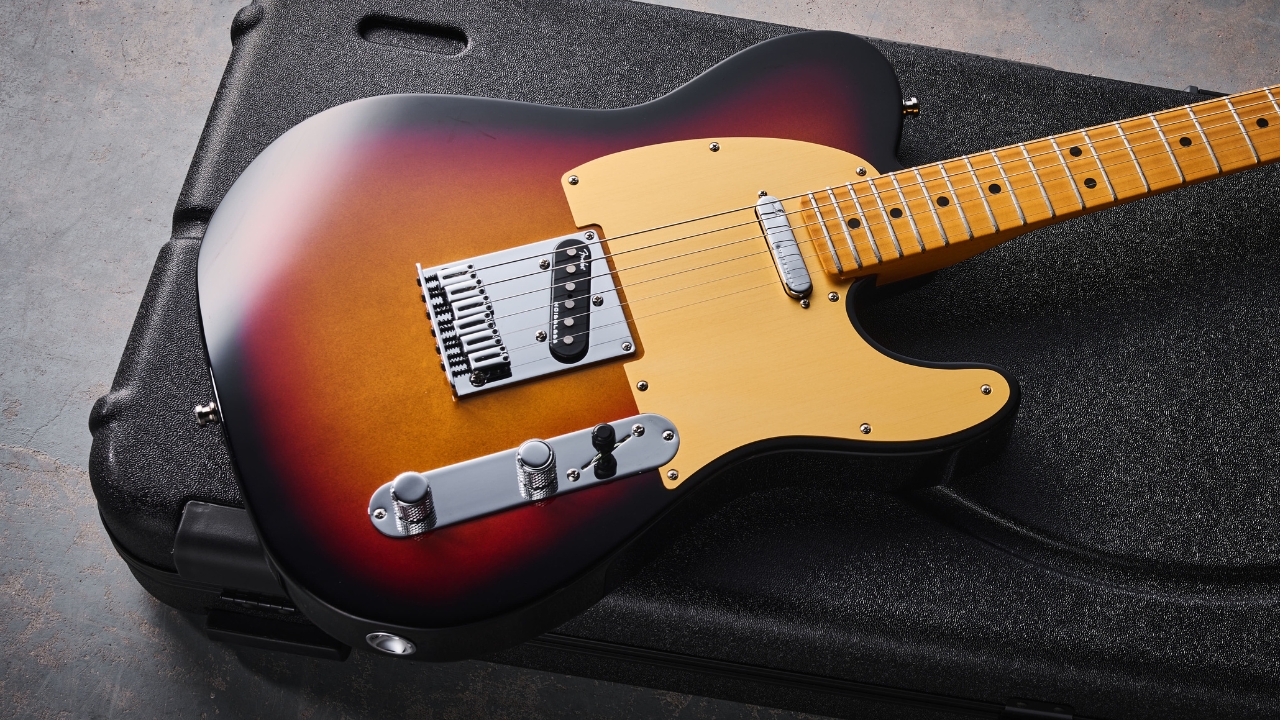
9. Fender American Ultra II Tele
Specifications
Reasons to buy
Reasons to avoid
✅ Buy if you want versatility: From superb cleans to filthy high gain, this Telecaster can do it all tonally.
❌ Avoid if you’re on a budget: Quality this good comes with a sizable price attached. So, if you’re on a tight budget, you’ll want to look elsewhere
Build: ★★★★★
Playability: ★★★★★
Sound: ★★★★★
Build: The American Ultra II Telecaster boasts a sleek design with a classic alder body paired with a quartersawn maple neck, ensuring top-notch stability and premium feel. The neck features a Modern D shape, bolted to the body just like Leo Fender intended, and is finished in Ultra Satin for that super tactile experience. Add in stylish touches like the gold Fender logo, locking tuners, and Luminlay glow-in-the-dark fret markers, and you've got a guitar that looks as good as it feels.
Playability: When it comes to playability, this guitar truly shines, in my opinion. The rolled fingerboard edges and a 10” to 14” compound radius make it easy to navigate, whether you’re shredding gravity-defying legato licks or playing it safe with simple open strumming. Even after long sessions, the comfort factor is impressive - I'd go as far as to say, it's like this guitar is designed to help you play your best.
Sound: Tonally, Ultra II is a classic Tele with a modern twist. Equipped with Ultra Noiseless Vintage pickups, you’ll get that unmistakable Tele tone without any of that dreaded noise that drives us high-gain lovers completely mad. Overall, the American Ultra II offers a versatile sound profile fit for country, rock, or anything in between, making it a fantastic choice for any guitarist looking for quality and performance in one seriously good-looking package.

"A radical revamp of Telecaster playability reaffirms a commitment to classic Tele tones in Fender’s modernized take on the solid-body electric that started it all. Those Noiseless Vintage pickups give it a high-fidelity, EQ’d quality; the Tele is the best version of itself. It’s a workhorse for the biggest job you’ve got."
Read my full Fender American Ultra II Tele review
Best premium

Specifications
Reasons to buy
Reasons to avoid
✅ Buy if you want a high-end guitar: This guitar is the pinnacle of the ES line and offers premium features and a tone to match
❌ Avoid if you are on a budget: Gibson and Epiphone offer many ES guitars at all price points. If you're on a strict budget, it’s best to avoid this one and opt for something cheaper.
Build: ★★★★★
Playability: ★★★★½
Sound: ★★★★★
Build: One look at the elegant ES Supreme and you know Gibson means business. Featuring a stunning AAA figured maple top and a three-ply laminate construction that beautifully highlights the wood grain, this guitar oozes luxury. The five-ply binding around the body and headstock adds a touch of elegance, while the Super Split Block mother-of-pearl fingerboard inlays and modified “diamond” headstock inlay really drive the point home; this is a Supreme guitar indeed.
Playability: Playing the ES Supreme is a delight, thanks to its thoughtfully constructed neck profile. I noticed some variation in neck thickness between various models, which means I could find the perfect fit for my hand. The 22 medium jumbo frets and smooth ebony fingerboard make for effortless navigation along the fretboard. I’d recommend trying one out in person at a dealer to ensure you find the ideal guitar for your playing style.
Sound: The sound of the ES Supreme is extraordinary. The Burstbucker Pro humbuckers deliver a rich, dynamic tone across all settings, clean or distorted. The coil tapping feature offers a wide range of tones, providing a unique, funky midrange reminiscent of a Strat. Overall, the ES Supreme captures the essence of the classic ES-335 while offering enhanced versatility and an absolutely stunning new aesthetic.

"The ES Supreme is indeed a supreme upgrade of the classic ES-335 design, with exceptionally more versatile tonal options and a striking upscale appearance."
Read my full Gibson ES Supreme review
How to choose

When it comes to selecting your dream electric guitar, you’ll want to keep a few things in mind.
Tonewoods: As well as the shape and size of the guitar, weight is largely determined by the wood used. Though often contested, the general consensus is that denser woods tend to yield more sustain. Mahogany, commonly used by Gibson, typically lends a slightly mellower, warmer sound, with beautiful low and mid frequencies.
Fender often uses alder, as it provides an even frequency response without being too light or too heavy, as well as ash, which is usually a slightly brighter-sounding wood. Something like basswood is quite light and, because it’s easily sourced, is usually cheap and gets used on many budget guitars. Don’t let that put you off, though - tone-wise, it’s fairly transparent and evenly balanced.
Pickups: Pickups play the biggest role in shaping your electric guitar’s sound (alongside you, of course!). Pickups are basically magnets housed in a bobbin, wound with wire, that convert the vibrations caused by your moving strings into an electrical signal, which is then sent to your amp.
There are many different pickup types out there, but the most popular types are single coils and humbuckers. Single-coil pickups are found in many Fender guitars, such as the Strat and the Tele, and deliver a bright, clear sound, often with a slight midrange scoop. Strat pickups often sound ‘glassy’ and ‘chimey’, and ‘twang’ is synonymous with the Tele.
Humbuckers tend to sound bigger, beefier, and warmer. They fill out slightly more space in a mix and usually give out more output than single coils, making them break up sooner. If you already play a guitar with single-coils, then maybe look for something with humbuckers, or vice versa, so you can cover more ground.
There are guitars out there that feature a mixture of single coils and humbucker pickups, like the HSS Strat, giving you the best of both worlds. There are also coil-tapped or coil-split humbuckers that, when engaged, effectively act as single coils.
Hardware: An electric guitar’s hardware can help improve tuning stability, tone, and longevity. As you start to spend more, you’ll get things like better quality tuners (sometimes locking tuners), sturdier hardware that fits together better and improves sustain, as well as better and more reliable electronics that keep your signal clearer.
Neck profile: Neck profiles can vary, too, and should be considered when looking for the best electric guitar for you. It’s all very much down to personal preference, but neck profiles can range from super thin, like on the Ibanez RG550, to thicker, more vintage-style profiles like on the ES-335. Generally speaking, faster, shreddier players prefer thin necks, and old-school blues and rock players go for either a thick neck or something in the middle.
There is definitely space for a bit of 'gut feeling' when you're shopping. We've all had situations where we've played a guitar we'd never normally have looked twice at and had it pleasantly surprise us. Keeping an open mind is no bad thing. Sometimes, when you pick up a guitar, you just know. There's no rationale.
But, instinct aside, you can at least put yourself in the right ballpark by using guides like this one to hone in on what works for you. With so many variables, it can be hard to know where to start. Maybe you'll find your dream guitar with a quick scroll, or maybe it will take some further research, but we hope to help you start that journey right here.
Spec comparison
Model | Body | Neck | Pickups | Who's it for? |
|---|---|---|---|---|
Fender American Ultra II Tele | Alder | Maple | Ultra II Noiseless | Pro/Experienced Players |
Sterling By Music Man Intro Series Cutlass | Poplar | Maple | Ceramic Humbucker/Ceramic Single Coils | Beginners/Tight Budget |
Squier Sonic Mustang | Poplar | Maple | Ceramic Humbuckers | Beginners/Tight Budget |
Ibanez GRGM21M-BLT | Poplar | Maple | Infinity Humbuckers | Kids |
PRS SE Custom 24 | Mahogany back with Maple Top | Maple | PRS 85/15 ‘S’ Treble and Bass humbuckers | Intermediate/Experienced |
Epiphone Les Paul Special | Mahogany | Mahogany | P90 Pro Soapbar | Beginner/Intermediate |
Gibson Les Paul Studio Session | Mahogany with Maple Top | Mahogany | '57 Classic +/ '57 Classic | Intermediate/Experienced |
Guild Polara Deluxe | Mahogany | Mahogany | Guild HB-2+ | Beginner/Intermediate |
Fender Vintera II 60s Stratocaster | Alder | Maple | Vintage-Style '60s Single-Coil Strat | Intermediate/Experienced |
Gibson ES Supreme | Three-ply AAA figured Maple/Poplar/Maple | Mahogany | Gibson Burstbucker Lead and Rhythm Pro | Pro/Experienced Players |
FAQs
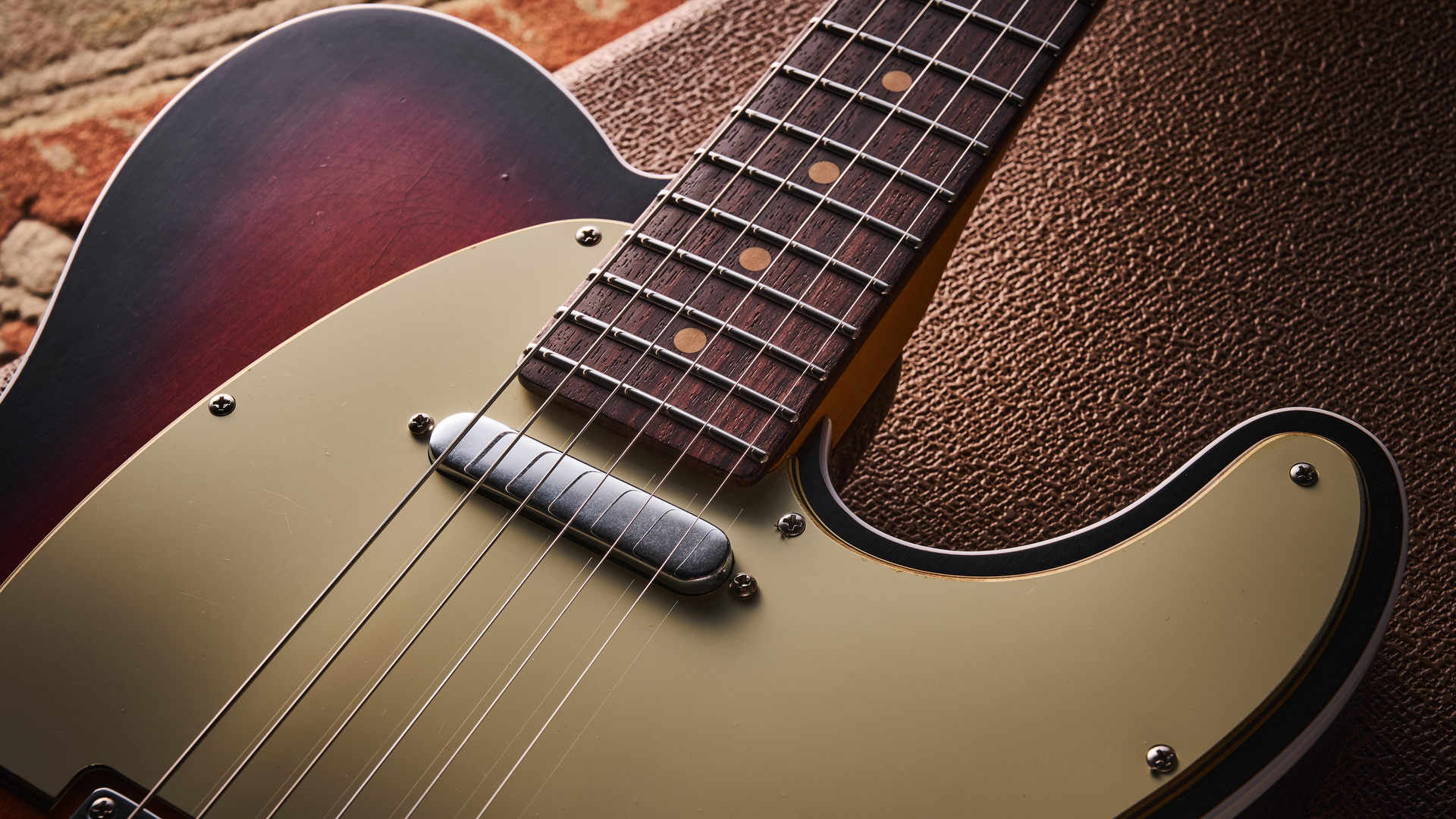
How much should I spend on an electric guitar?
When buying an electric guitar, you get what you pay for. On more premium models, you’ll find higher quality woods, better parts, and a much higher level of finishing. Of course, the hardware, such as the tuners, bridge, and nut, will also be more reliable.
One of the key factors in electric guitars is the pickups. Higher-end guitars often feature better pickups, which can greatly influence your sound, providing more clarity, warmth, and versatility.
That said, there are great budget electric guitars that effectively balance all these aspects with cost. If you’re just starting out, you can find a decent beginner-friendly electric guitar for around $150-200. If you’re looking to upgrade, you’ll likely notice significant improvements in tone and playability in the $700-1,000 range. For a pro-level instrument, depending on your preferences, you should expect to invest around $1,500 and up.
Should I buy a guitar online?
In the past, many viewed buying a guitar online as a risky endeavor, but that's no longer the case.
While trying out a guitar in a local music store is often ideal before making a purchase, it isn't always a feasible option. Certain brands may not be stocked in your local store, or you might not have time to shop around, and, let's face it, playing in front of others can feel intimidating. This is where online shopping may be suitable for you.
Retailers of musical instruments on the internet, such as Guitar Center, Musician's Friend, and Sweetwater, typically provide standard hassle-free return policies, allowing you to buy a guitar, test it out at home, and return it if it doesn’t meet your needs.
Most of these retailers offer a return window of 30 to 45 days, provided the item is in its original condition.
How do you look after an electric guitar?
To ensure that your guitar remains in good condition and to avoid premature wear or the need for replacement parts - or, god forbid, an entire instrument - regular maintenance is essential. Restringing your guitar every 2–3 months can keep it sounding fresh and vibrant, and it provides an opportunity to give it a thorough cleaning to prevent dirt buildup. Additionally, wiping down the strings after each use is beneficial.
Since guitar necks can easily break if dropped or bumped, investing in a quality guitar stand is a wise decision. You can safely use most types of guitar polishes on polyurethane finishes; however, it’s always a good idea to check with the manufacturer first. For nitrocellulose finishes, commonly found on Gibson and PRS guitars, you need to be more cautious about which polishes and stands you use, as some can damage the lacquer. Therefore, it's crucial to ensure that you select nitro-friendly products.
Why trust us?
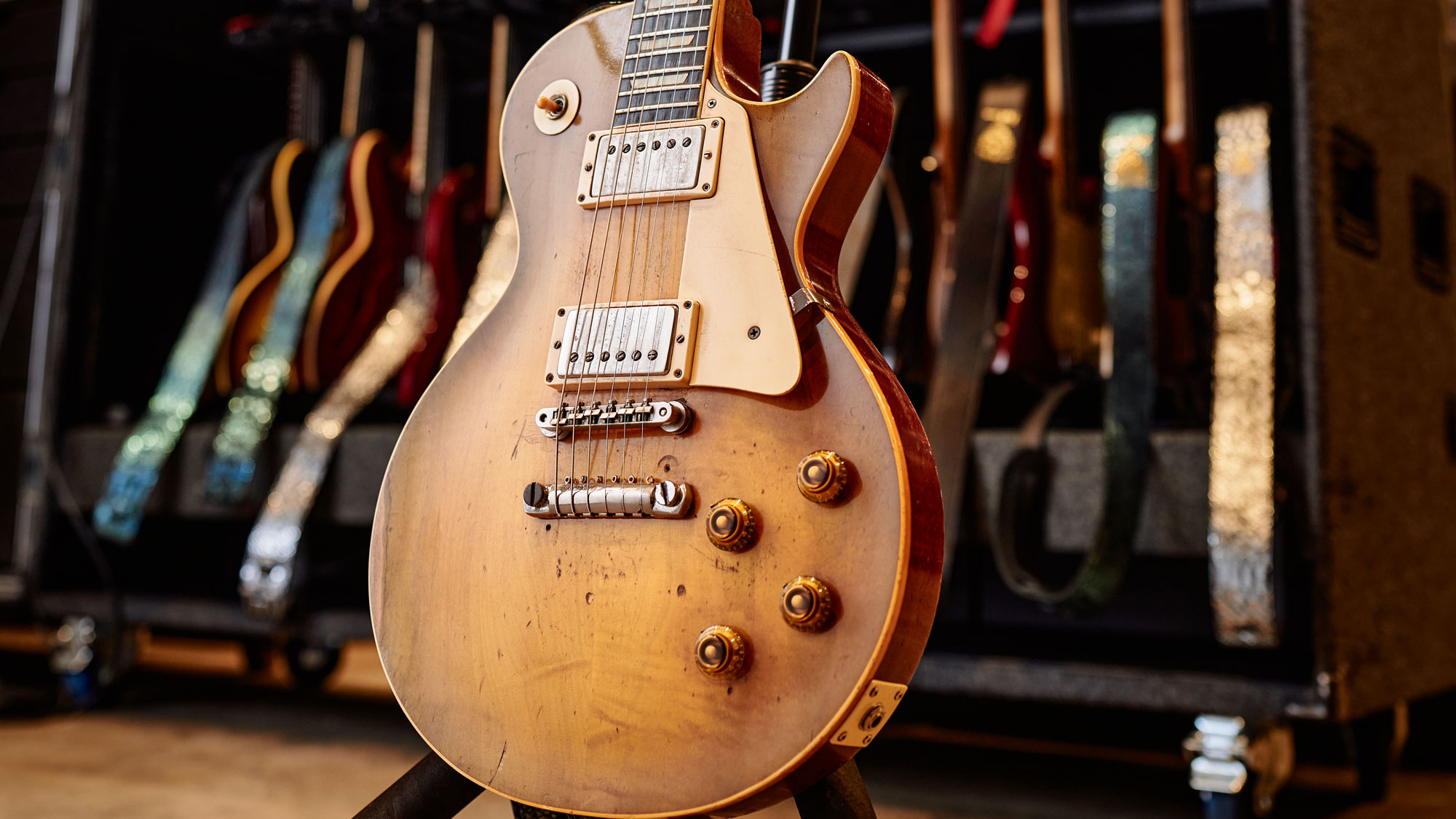
☑️ A global audience of 3.8 million guitarists monthly
☑️ 1,200+ reviews on GuitarWorld.com
☑️ 30+ years of product testing at Guitar World
Guitar World boasts over 44 years of expertise and stands as the ultimate authority on all things related to guitars. The magazine and website feature expertly written gear round-ups and top-quality, authoritative reviews penned by a team of highly experienced industry professionals.
Guitar World's inaugural print issue hit the shelves in July 1980, and ever since, it has been captivating players and enthusiasts with engaging lessons, insightful interviews with the biggest guitar heroes, and priceless buying advice for newbie players.
Furthermore, GuitarWorld.com continues this legacy online and serves as the hub of the world's foremost authorities on guitar playing. The site not only hosts content from Guitar World but also showcases articles from respected publications such as Guitarist, Total Guitar, Guitar Techniques, and Bass Player. With a reach extending to 3.8 million players each month, GuitarWorld.com is a go-to destination for guitar fanatics globally.
Below, you'll find more information about the expert author of this guide.

Daryl is a Senior Deals Writer at Guitar World, where he creates and maintains our 200+ buyer's guides, finds the best deals on guitar products, and tests the latest gear. His reviews have been featured in prominent publications like Total Guitar, Guitarist, Future Music, and MusicRadar.com.
During his career, he has been lucky enough to talk to many of his musical heroes, having interviewed Slash and members of Sum 41, Foo Fighters, The Offspring, Coheed & Cambria, Thrice, and more. In a past life, he worked in music retail. For a little under a decade, he advised everyone from absolute beginners to seasoned pros on the right gear for their needs.
Daryl's world doesn't just revolve around guitars either; he also has a passion for live sound. Daryl is a fully qualified sound engineer who holds a first-class Bachelor's degree in Creative Sound Production from the University of Abertay and has plenty of experience working in various venues around Scotland.
How we shoot videos
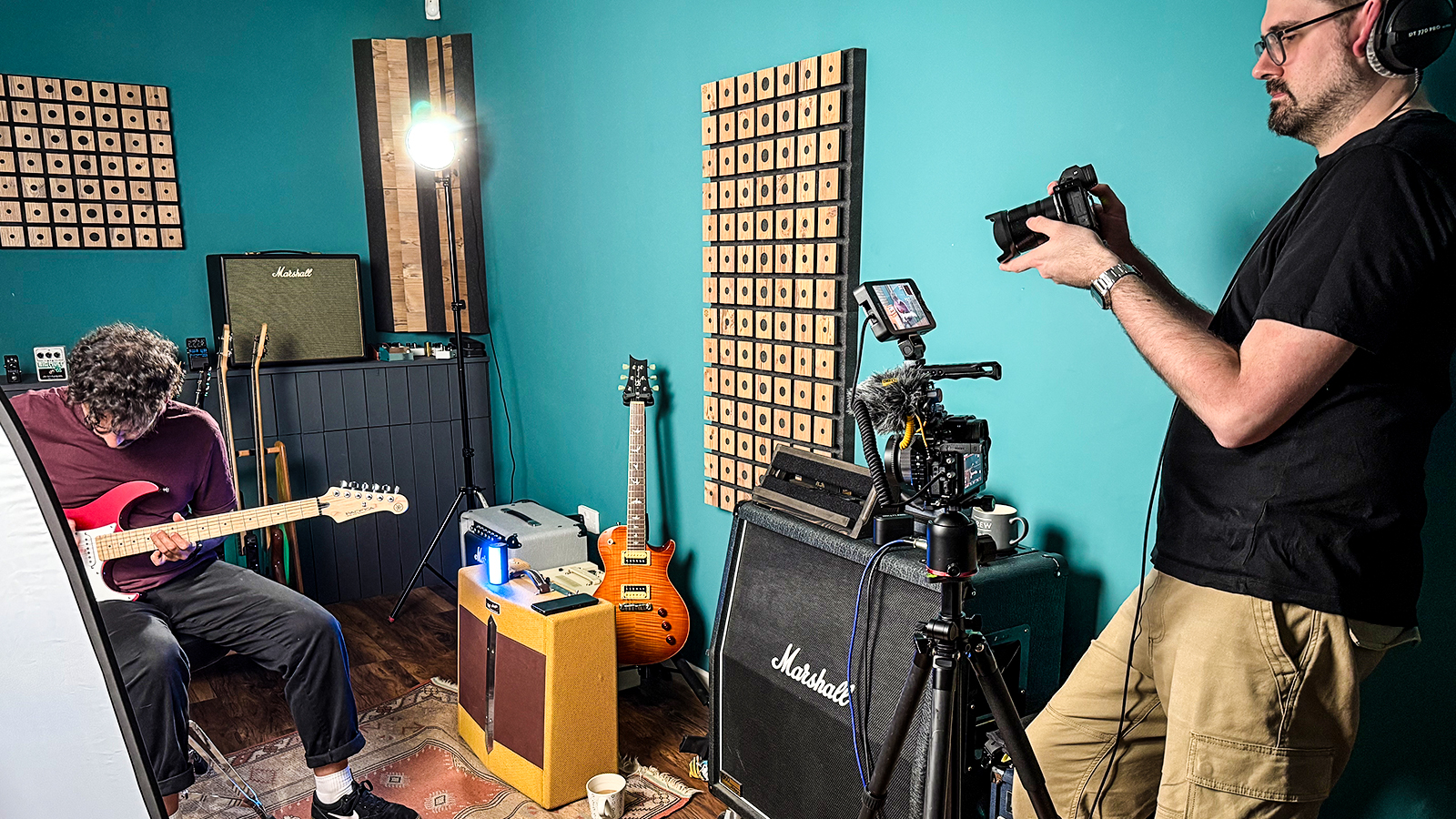
One of the most significant factors to consider when choosing an electric guitar is the sound it produces – that’s why I've recorded and filmed a short playing demo of the top 5 guitars in the guide. That way, you can make an informed decision based purely on which model you think sounds the best.
In order to keep things simple, our demonstrator and Guitar World team member, Peter performed a simple chord progression and licks on every guitar, while switching between the pickup positions, both clean and distorted.
We recorded the video demos in our dedicated studio in Bath, UK. If you’re a regular consumer of guitar content on YouTube, you may recognize this space as the famous Guitarist Tone Lounge.
Now, to ensure the most consistent tone possible across all the guitars, we used the Neural DSP Quad Cortex amp modeler. For the clean sounds, we used our favorite US DLX Normal setting paired with a 112 US DLX SC64 cabinet model and a touch of room reverb for some depth. The dirty sounds kept the same US DLX model, but this time partnered up with a Tube Screamer-style overdrive at the front. Of course, we kept the same natural room reverb as the previous setting.
As you’d expect, we applied some post-processing to the audio once it was captured, but we kept this to a minimum, sticking to light compression to maintain consistent levels.
Recent updates
23/10/25: We've changed our top pick to the Fender Vintera II 60s Stratocaster, acknowledging its glowing review. The order of the guide has been rearranged, and several categories have been changed to better meet the needs of a variety of guitar players. 13/08/24: This guide has been completely overhauled with all new products based on recent reviews, as well as video demos of the top five products and all new buying advice.
Related buyer's guides
You can trust Guitar World
- Play harder with the best rock guitars
- Go down low with the best baritone guitars
- Got the blues? Check out the best blues guitars
- These are the best electric guitars under $1,000
All the latest guitar news, interviews, lessons, reviews, deals and more, direct to your inbox!

Daryl is a Senior Deals Writer at Guitar World, where he creates and maintains our 200+ buyer's guides, finds the best deals on guitar products, and tests the latest gear. His reviews have been featured in prominent publications like Total Guitar, Guitarist, Future Music magazine, and MusicRadar.com.
During his career, he has been lucky enough to talk to many of his musical heroes, having interviewed Slash and members of Sum 41, Foo Fighters, The Offspring, Thrice, and more. In a past life, Daryl worked in music retail. For a little under a decade, he advised everyone from absolute beginners to seasoned pros on the right gear for their needs.
Daryl is a fully qualified sound engineer, holding a first-class Bachelor's degree in Creative Sound Production from the University of Abertay.
